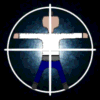| |

- B. Adolphe, The Mind’s Ear, Missouri: MMB Music Inc,
1991.
- D.P. Anderson and R. Kuivila. A System for Computer Music
Performance, ACM Transactions on Computer Science 8(1):56,
1990.
- E. Angel. Interactive Computer Graphics: a top-down approach
with OpenGL, Addison-Wesley, 2000. 2nd Edition.
- N. Ben-Or. The Alexander Technique in the Preparation and
Performance of Music. Private Publication, 1988.
- T.Boehm. The Flute and Flute-Playing, Dover Publications,
Inc., 1964. Republished from 1922 revised edition. Original edition
published 1872.
- A. Burns and A. Wellings. Real-Time Systems and Programming
Languages, Addison-Wesley, 2001. 3rd Edition.
- W. Buxton and R. Dannenberg. The Computer as Musical
Accompanist, ACM SIGCHI Conf. Proc. on Human Factors in Computing
17(4):41-43, 1996.
- Casio Computer Co. Ltd. CTK-520L Keyboard Technical Specifications,
2000. Available from http://www.casio.com.
- R.W. Chabay and B.A. Sherwood. A Practical Guide for the
Creation of Education Software, in Computer-Assisted Instruction
and Intelligent Tutoring Systems, Lawrence Erlbaum Associates,
Inc., 1992.
- R.Chapman. The Complete Guitarist. Dorling Kindersley,
1993.
- Sally Chappell. Developing the complete pianist: a study
of the importance of a whole-brain approach to piano teaching,
B.J. Music Ed. 16(3):253-262, 1999.
- D. Cope. Experiments in Musical Intelligence, A-R Editions,
Inc., 1996.
- G.R. Culley. "From syntax to semantics in Foreign Language
CAI", in Computer-Assisted Instruction and Intelligent
Tutor Systems, 1992.
- R. Dick. The Other Flute, Oxford University Press, 1975.
- E.W. Dijkstra. A note on Two Problems in Connection with
Graphs, Numerische Mathematik 1:269-271, 1959.
- S. Gordon, Etudes for Piano Teachers: Reflections on the
Teacher’s Art, Oxford University Press, 1995.
- John Harton, "The Importance of Enjoyment and Achievement",
in Handbook for Music Teachers, Novello and Co Ltd., 1964.
- P. Van Hentenryck. Constraint Satisfaction in Logic Programming,
MIT Press 1989.
- R.W. House. Instrumental Music for Today’s Schools. Prentice
Hall, 1965.
- T. Howell. The Anant-Garde Flute, University of California
Press, 1974.
- J. Huopaniemi, R. Hanninen, T. Ilmonen, H. Napari, T. Lokki,
L. Savioja, H. Huopaniemi, M. M. Karjalainen, T. Tolonen, V. Valimaki,
S. Valimaki and T. Takala. Virtual Orchestra Performance, ACM
SIGGRAPH Visual Proceedings of SIGGRAPH’97 (p.81), 1997.
- T. Ilmonen. Tracking Conductor of an Orchestra using Artificial
Neural Networks, Master’s Thesis, Telecommunications Software
and Multimedia Laboratory, Helsinki University of Technology,
1999.
- Finn Jensen, Introduction to Bayesian Networks, UCL Press,
2001. 2nd Edition.
- Ian Laurence. Music and the Teacher, The Pitman Press,
1975.
- Loki Software. OpenAL Specification and Reference, October
2000. Version 1.0 (final draft). Available from http://www.openal.org.
- Tapio Lokki, Jarmo Hiipakka, Rami Hanninen, Tommi Ilmonen, Lauri
Savioja and Tapio Takala. Realtime audiovisual rendering and
contemporary audiovisual art. Organised Sound 3(3): 219–33.
Cambridge University Press, 1998.
- W. Lytle.. More bells and whistles [video]. SIGGRAPH’90
Electronic Theater, 1990. Technically described in J. Hahn (ed.),
Sound Synchronization and Synthesis for Computer Animation
and Virtual Reality, Course Note 12, SIGGRAPH’94, 1994. Also
described in IEEE Computer 24(7):4 and cover (July 1991).
- R. Mager. Preparing Instructional Objectives, Atlantic
Books, 1998. 3rd Edition.
- Hideyuki Manta et al. A Computer Music System that Follows
a Human Conductor. IEEE Computer 24(7):44-53, 1991.
- Paul Messick. MAXIMUM MIDI: Music Applications in C++,
Manning Publications, 1998.
- MIDI Manufacturers Association. The Complete MIDI 1.0 Detailed
Specification, March 1996. Version 96.1.
- MIDI Manufacturers Association and
Japan MIDI Standard Committee. General MIDI specification,
September 1991. Available from: http://www.midi.org.
- G. Morris. Flute Technique, Oxford University Press,
1991.
- J.J.Quantz. On Playing the Flute, Faber and Faber, 1966.
- B. Reimer. A Philosophy of Music Education. Prentice
Hall, 1989.
- Roland Corporation. General Sound
(GS) Specification, 1990. Available from http://www.rolandus.com.
- Roland Corporation. V-MT1 Music
Tutor Visual MT Product Notes. Available from: http://www.rolandus.com/PRODUCTS/INFO/PDF/VMT1FX.PDF.
- Roland Corporation. Wanna Play?
(Or Do You Wanna Practise?). Available from: http://www.rolandus.com.
- T. Rossing, R.F. Moore and P.A. Wheeler. The Science of Sound,
Addison-Wesley, 2002.
- S. Russell and P. Norvig. Artificial Intelligence: A Modern
Approach, Prentice Hall, 1995.
- Samir I. Sayegh. Fingering for string instruments
with Optimal Path Paradigm. Computer Music Journal, 13(3):76-84,
1989.
- Silicon Graphics, Inc. The OpenGL
Graphics System: A Specification, April 1999. Version 1.2.1.
Available from: http://www.opengl.org.
- R. Slack. "The Use of Aural and Visual Aids",
in Handbook for Music Teachers, Novello and Co Ltd., 1964.
- C. Small. Music, Society, Education, Wesleyan University
Press, 1996. 2nd Edition.
- D.J. Spiegelhalter, A. Thomas, N.G. Best and W.R. Gilks. BUGS:
Bayesian inference Using Gibbs Sampling, Version 0.50. MRC
Biostatistics Unit, Cambridge, 1995.
- Steinberg. Virtual Studio Technology Plugin Specification
2.0, Software Development Kit Documentation, 1999. Documentation
Release #1.
- E.R. Steinberg. Teaching Computers to Teach, Laurence
Erlbaum Associates, Inc., 1984.
- K. Swanwick. Music, Mind and Education, Routledge, 1988.
- T. Takala, R. Hanninen, V. Valimaki, L. Savioja, J. Huopaniemi,
T. Huotilainen, M. Karjalainen. An integrated system for virtual
audio reality, 100th Audio Engineering Society
(AES) Convention Preprint no. 4229. Copenhagen Denmark,
1996.
- J.Taylor. Tone production on the Classical Guitar, Musical
New Services, 1978.
- J.Thomson. The Cambridge Companion to the Recorder, Cambridge
University Press, 1995
- A.J. Viterbi. Error Bounds for Convolutional Codes and an
Asymptotically Optimum Decoding algorithm, IEEE Transactions
on Information Theory IT3(2):260-269, 1967.
- Paul White. basic MIDI, 2000. Sanctuary Publishing.
- Paul White. MIDI for the Technophobe, 2000, Sanctuary
Publishing.
- Yamaha Corporation. Yamaha CS1x Data List, March 1996.
- Yamaha Corporation. XG Specification,
October 1998. Version 1.32.
- Yamaha Corporation and Stanford
University. SONDIUS XG Virtual Acoustic Modelling Synthesis.
Available from: http://www.stanford.edu/group/cpdcorp/research/otlsondius.html
|

![]()

![]()
